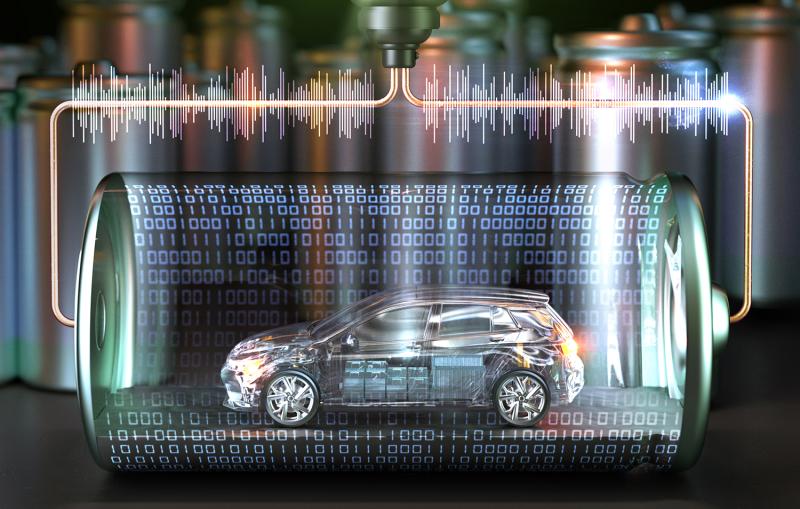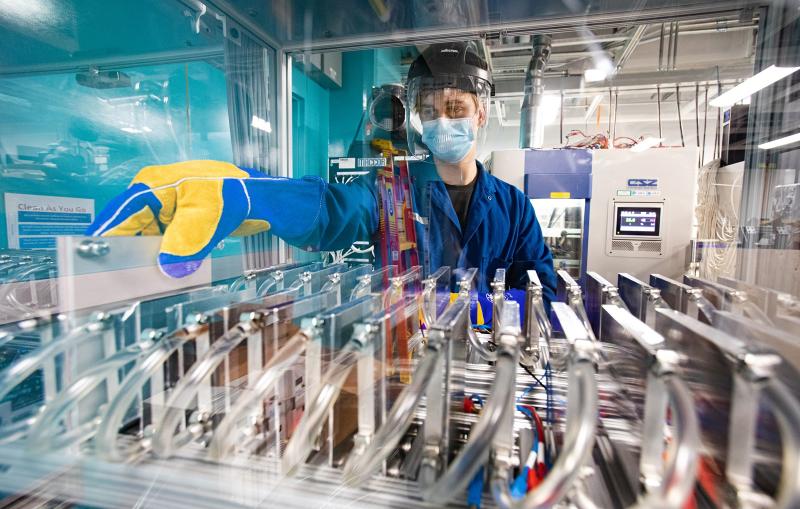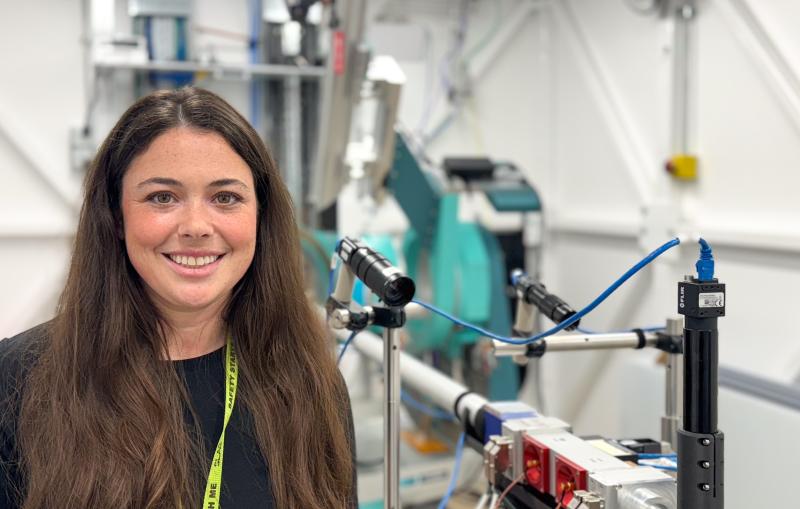Researchers get most comprehensive view yet of lithium-ion battery electrode damage
What they learned could help manufacturers design more reliable and longer-lasting batteries for smartphones and cars.
By Ali Sundermier
A multi-institute team of researchers has developed the most comprehensive view yet of how repeated charging damages lithium-ion battery electrodes. Manufacturers could potentially use this information to design more reliable and longer-lasting batteries for smartphones and cars, the researchers say.
“Before, people didn’t have the techniques or theory to understand this problem,” says co-author Kejie Zhao, an assistant professor of mechanical engineering at Purdue University.
The technique they used, explained in Advanced Energy Materials and the Journal of the Mechanics and Physics of Solids, is essentially an X-ray tool driven by artificial intelligence. It can automatically scan thousands of particles in a lithium-ion battery electrode at once – all the way down to the nanoscale – using machine-learning algorithms.
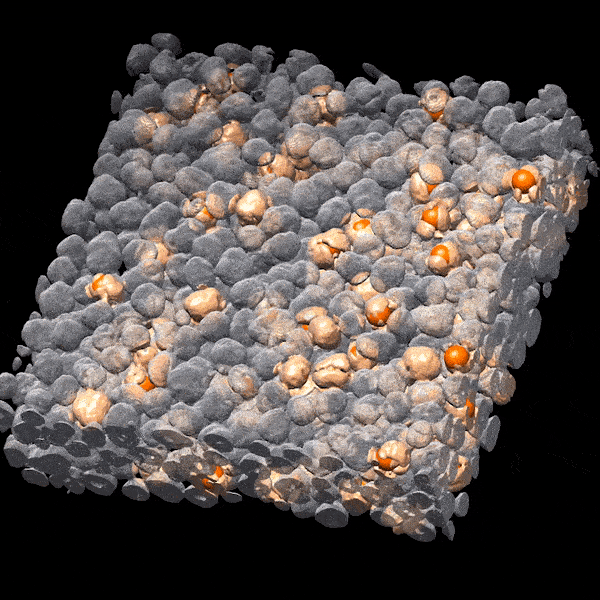
"Battery electrodes are complex and made up of many particles,” says study co-author Yijin Liu, a scientist at the Department of Energy’s SLAC National Accelerator Laboratory. “These particles, known as the active material, host the lithium ions and are responsible for energy storage and release in the battery. A huge amount of effort has already been devoted to making better active materials, but how we assemble them together also critically affects the performance. In this study we scanned a large area of thousands of particles with both high resolution and high sensitivity to better understand this problem.”
Scaling up
Granted, there are actually millions of particles in a battery electrode. But researchers can now analyze them more thoroughly than they could before – and in operating conditions now faced by commercial batteries, such as fast charging.
“Most work had been focused on the single particle level and using that analysis to understand the whole battery. But there’s obviously a gap there; a lot differs between a single particle at a micron scale and the whole battery at a much larger scale,” says Zhao, whose lab studies the fundamental science of how the mechanical and electrochemical aspects of a battery affect each other.
Creating a new technique
Every time a battery charges, lithium ions travel back and forth between a positive electrode and a negative electrode. These ions interact with particles in electrodes, causing them to crack and degrade over time. Electrode damage reduces a battery’s charging capacity.
It’s hard to for a battery to have a high capacity and be reliable at the same time, Zhao says. Increasing a battery’s capacity often means sacrificing its reliability.
The researchers’ work to map out damage in lithium-ion batteries started with their finding that battery particles don’t all degrade at the same time or in the same location; some particles fail more quickly than others.
But to study this in more detail, the team needed to create a new technique.
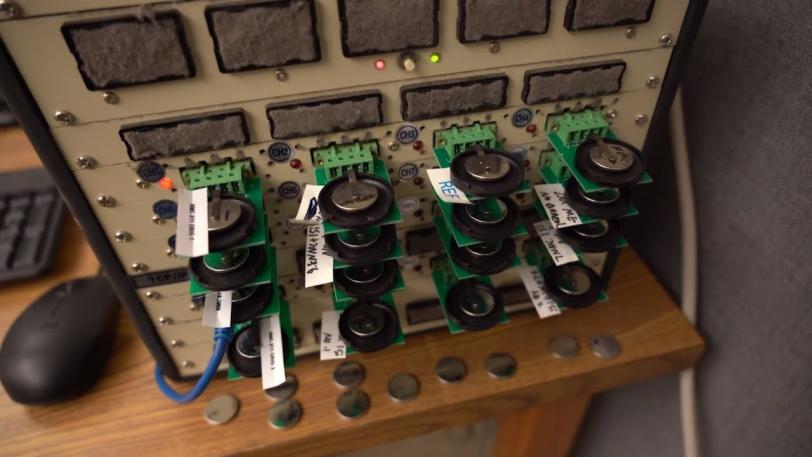
Imaging Lithium-Ion Batteries at the Particle Level
Intense X-ray beams
The researchers turned to X-ray facilities at the European Synchrotron Radiation Facility (ESRF) and SLAC’s Stanford Synchrotron Radiation Lightsource (SSRL), which generate intense beams of X-rays for probing the chemistry of samples and creating images in near-atomic detail.
“These facilities allowed us to study larger quantities of battery particles at higher resolution,” says co-author Feng Lin, an assistant professor at Virginia Tech.
Virginia Tech researchers manufactured the materials and batteries for testing – ranging from the pouch cell batteries in smartphones to the coin cells in watches. Researchers at ESRF and SSRL created systems for scanning as many electrode particles as possible in a single go and produced X-ray images for analysis. Maps of particle cracking and degradation at the surfaces of particles can now serve as reference tools for understanding the full range of potential damage in battery electrodes.
“This allowed us to track the level of damage in each electrode after using the battery,” says first author and ESRF scientist Yang Yang.
To understand how these cracks impact battery performance, Zhao’s team at Purdue developed theories and computational tools. They found, for example, that particles in areas that are more heavily used during charging and discharging also fail more quickly.
This variability in electrode particle damage is more severe in thicker electrodes and during fast charging.
Bridging the gap
The researchers now plan to use the technique to document how damage occurs and affects performance in commercial batteries.
“For experiments we run at synchrotrons, we have a strong focus on the fundamental understanding,” Liu says. “However, in order to apply what we find to real-world products, we have to scale it up and look at these things in more realistic conditions and formations. This paper really bridges the fundamental aspects of our previous work with industrial relevance, which will enable scientists to design the next generation of these battery materials.”
SSRL is a DOE Office of Science user facility. This work is supported by multiple entities, including the U.S. Department of Energy Office of Science and the National Science Foundation.
This article is based on a press release from Purdue University.
Citations: Yang Yang et al., Advanced Energy Materials, 29 May 2019 (10.1002/aenm.201900674)
Rong Xu et al., Journal of the Mechanics and Physics of Solids, 11 May 2019 (10.1016/j.jmps.2019.05.003)
For questions or comments, contact the SLAC Office of Communications at communications@slac.stanford.edu.
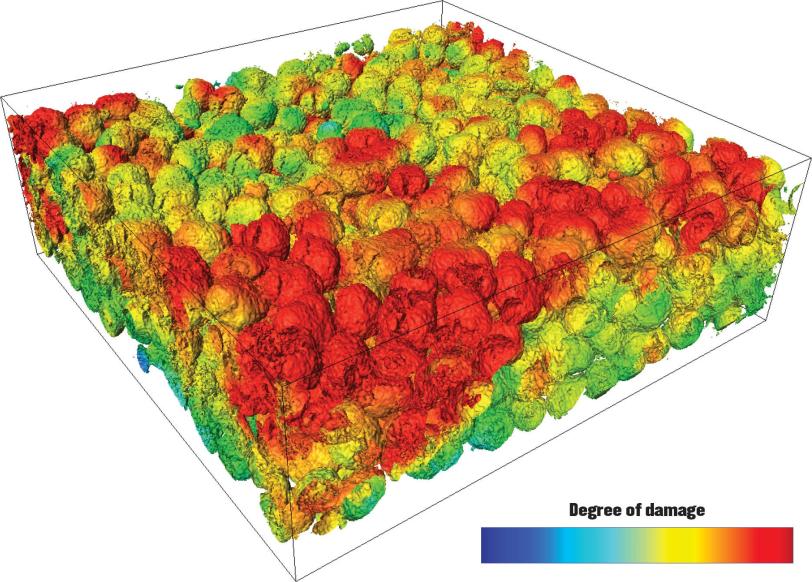
SLAC is a vibrant multiprogram laboratory that explores how the universe works at the biggest, smallest and fastest scales and invents powerful tools used by scientists around the globe. With research spanning particle physics, astrophysics and cosmology, materials, chemistry, bio- and energy sciences and scientific computing, we help solve real-world problems and advance the interests of the nation.
SLAC is operated by Stanford University for the U.S. Department of Energy’s Office of Science. The Office of Science is the single largest supporter of basic research in the physical sciences in the United States and is working to address some of the most pressing challenges of our time. For more information, visit energy.gov/science.

